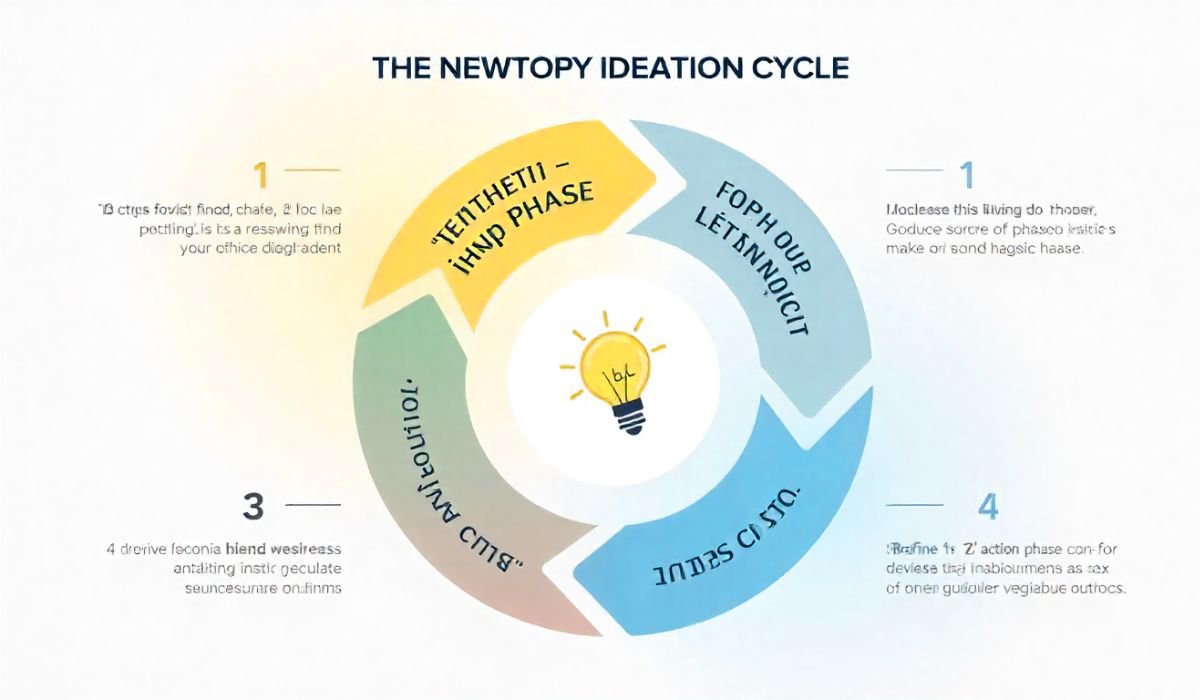Ever had one of those days where you’re staring at a blank screen, a blank canvas, or a business problem that seems impossible to solve? You’re trying to force a brilliant idea, but your brain feels like a tapped-out well. What if I told you the solution isn’t to try harder, but to think differently? That’s where newtopy comes in.
It sounds like a fancy, complex term, but I promise it’s a game-changer. Think of newtopy not as a rigid formula, but as your personal creativity compass. It’s the mental framework that helps you navigate from confusion to clarity, from a dead end to a breakthrough. In this guide, we’re going to break down everything you need to know to make newtopy work for you.
Let’s cut through the jargon. At its heart, newtopy is the art and science of making unexpected connections. It’s a structured approach to creative thinking that encourages your brain to link seemingly unrelated concepts to generate novel ideas and solutions.
A common misconception is that creativity is a magical gift you’re either born with or not. That’s a myth! Creativity is much more like a muscle. Newtopy is the workout routine that strengthens that muscle.
Imagine your mind is a vast city. Most of the time, you’re driving down the same familiar main roads—your usual ways of thinking. Newtopy is the process of deliberately taking the side streets, the alleyways, and the dirt paths. It’s about exploring the connections between the main roads and discovering entirely new routes you never knew existed.
Our brains are wired for efficiency. They create neural pathways for routine tasks so we don’t have to relearn how to brush our teeth every day. This is great for saving energy, but terrible for innovation. Newtopy actively fights against this mental autopilot, forcing your brain out of its comfort zone and into a state of fertile, creative thinking.
So, how do you do it? It’s not about waiting for a lightning strike of inspiration. It’s a proactive process. Let’s walk through it.
1. The Deep Dive (The Input Phase):
You can’t connect ideas from an empty tank. This first step is all about saturation. Immerse yourself in information related to your problem. Read articles, watch documentaries, talk to experts, and—crucially—explore topics that have nothing to do with your problem. If you’re trying to design a better water bottle, read about ancient Roman aqueducts or how plants transport water. Fill your mind with rich, diverse raw material.
2. The Conscious Release (The Letting-Go Phase):
This is the most counterintuitive but vital step. After you’ve soaked up all that information, you need to walk away. Seriously! Go for a walk, take a shower, work in the garden, or listen to music. Your conscious mind needs to relax for your subconscious to get to work. This is when your brain starts quietly making those newtopy connections in the background.
3. The Spark (The Connection Phase):
This is the “Aha!” moment. It’s when two unrelated ideas from your Deep Dive suddenly click together. Maybe the efficiency of a beehive (something you read about) gives you an idea for a new project management system. This spark often happens when you’re not forcing it, precisely because you completed Step 2.
4. The Refinement (The Action Phase):
A spark isn’t a finished product. Now, you bring your conscious, critical mind back to the table. That initial connection is raw and messy. Your job is to shape it, test it, and build it into a viable idea, design, or solution.
The table below summarizes this powerful cycle:
| Stage | The Goal | What You Actually Do |
| 1. Deep Dive | Gather Raw Material | Research, observe, and collect information from diverse fields. |
| 2. Release | Let the Subconscious Work | Step away from the problem. Do something relaxing and unrelated. |
| 3. The Spark | Make the Connection | Capture the “Aha!” moment when ideas unexpectedly combine. |
| 4. Refinement | Build the Idea | Evaluate, develop, and test the new connection into a practical solution. |
This isn’t just theoretical. Some of the world’s most innovative companies use newtopy principles, even if they don’t call it by that name.
- Apple: The creation of the iPhone is a masterclass in newtopy. Steve Jobs didn’t just look at other phones; he connected a mobile phone with a music iPod and an internet communicator. He saw the unexpected connection between three separate devices and created a single, revolutionary product.
- Airbnb: The founders connected the problem of paying rent with the opportunity of a major conference coming to town and a lack of hotel space. They linked the concepts of “spare air mattress” with “hotel alternative,” an connection that seemed odd at the time but built a billion-dollar business.
- Nike: Their famous “Just Do It” campaign came from a newtopy moment. The ad executive, Dan Wieden, was inspired by the last words of a convicted murderer, Gary Gilmore: “Let’s do it.” He connected the grim finality of a criminal’s statement with the motivating energy of athletic pursuit, creating one of the most iconic slogans in history.
Ready to put this into practice? Here are some simple, actionable ways to train your newtopy muscle starting right now.
- Become an Idea Magpie: Keep a “swipe file” or a notebook (digital or physical) where you collect interesting articles, quotes, images, and product designs. When you’re stuck, flip through it to force new connections.
- Change Your Inputs: If you always read the same blogs, listen to the same podcasts, and talk to the same people, you’ll get the same ideas. Deliberately consume media from a different industry, culture, or academic discipline once a week.
- Ask “How Would X Solve This?”: This is a fun one. Take your problem and ask, “How would a chef, a Navy SEAL, or a kindergarten teacher solve this?” Framing the problem through another lens forces newtopy connections.
- Embrace Constraint: It sounds crazy, but imposing limits can boost creativity. Try to solve your problem with a tiny budget, in half the time, or using only three resources. Constraints force you to think of connections you’d otherwise ignore.
- Schedule Your Shower Thoughts: Literally block out 15 minutes in your calendar for a non-work walk. This formalizes the “Release” phase and tells your brain it’s safe and encouraged to wander.
So, there you have it. Newtopy isn’t a secret club or a complex algorithm. It’s a mindset. It’s the conscious practice of feeding your brain diverse information, trusting it to do the work in the background, and being ready to capture and refine the brilliant connections it makes.
Your words must dance, and your ideas must flow. By embracing newtopy, you’re not just learning a technique; you’re giving yourself permission to be more curious, more playful, and more innovative in everything you do.
What’s the first unexpected connection you’re going to make?
1. Is newtopy just another word for brainstorming?
Not quite! Brainstorming is about generating a high volume of ideas, often in a group. Newtopy is the underlying process of how a single, novel idea is formed through unexpected connections. You can use newtopy principles to make your brainstorming sessions much more effective.
2. I’m not a “creative person.” Will newtopy work for me?
Absolutely. This is the biggest myth to dispel. Newtopy is a structured process, not a innate talent. It’s a skill you can learn and improve with practice, just like learning to cook or play a sport. Everyone’s brain is capable of making connections.
3. How long does the “Release” phase typically take?
It varies for everyone and for every problem. It could be 15 minutes during a walk, or it could be a few days while you work on other things. The key is to genuinely disengage from actively trying to solve the problem.
4. Can newtopy be used for team collaboration?
Yes, and it’s incredibly powerful! Teams can do a collective “Deep Dive,” sharing their diverse knowledge. Group activities like the “How Would X Solve This?” exercise can generate incredible team-based newtopy moments.
5. What’s the biggest mistake people make when trying newtopy?
They skip the Deep Dive and Release phases. They try to force a connection immediately without giving their brain any raw material or time to process. It’s like trying to bake a cake without first gathering the ingredients.
6. Is there a tool or app for this?
While any notepad app works, digital tools like Milanote or Miro are great for visually mapping information and forcing connections in a way that mimics the newtopy process.
7. How is this different from lateral thinking?
It’s a close cousin! Lateral thinking is a broader term for solving problems through an indirect and creative approach. Newtopy can be thought of as a specific, actionable framework within the lateral thinking umbrella, with a clear emphasis on the input-release-connection cycle.
You may also like: What is Voomoo? Your Friendly Guide to Effortless Flow

